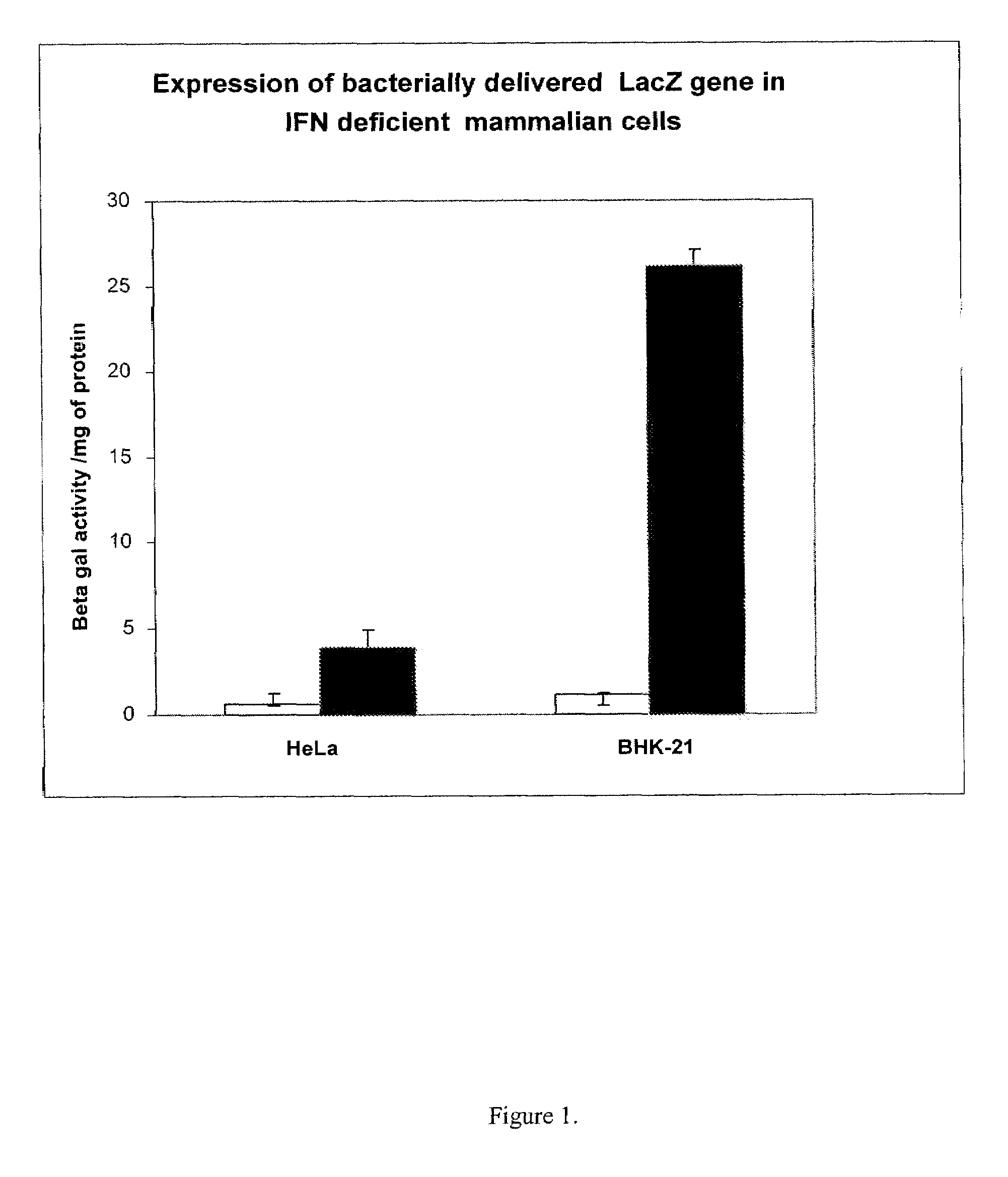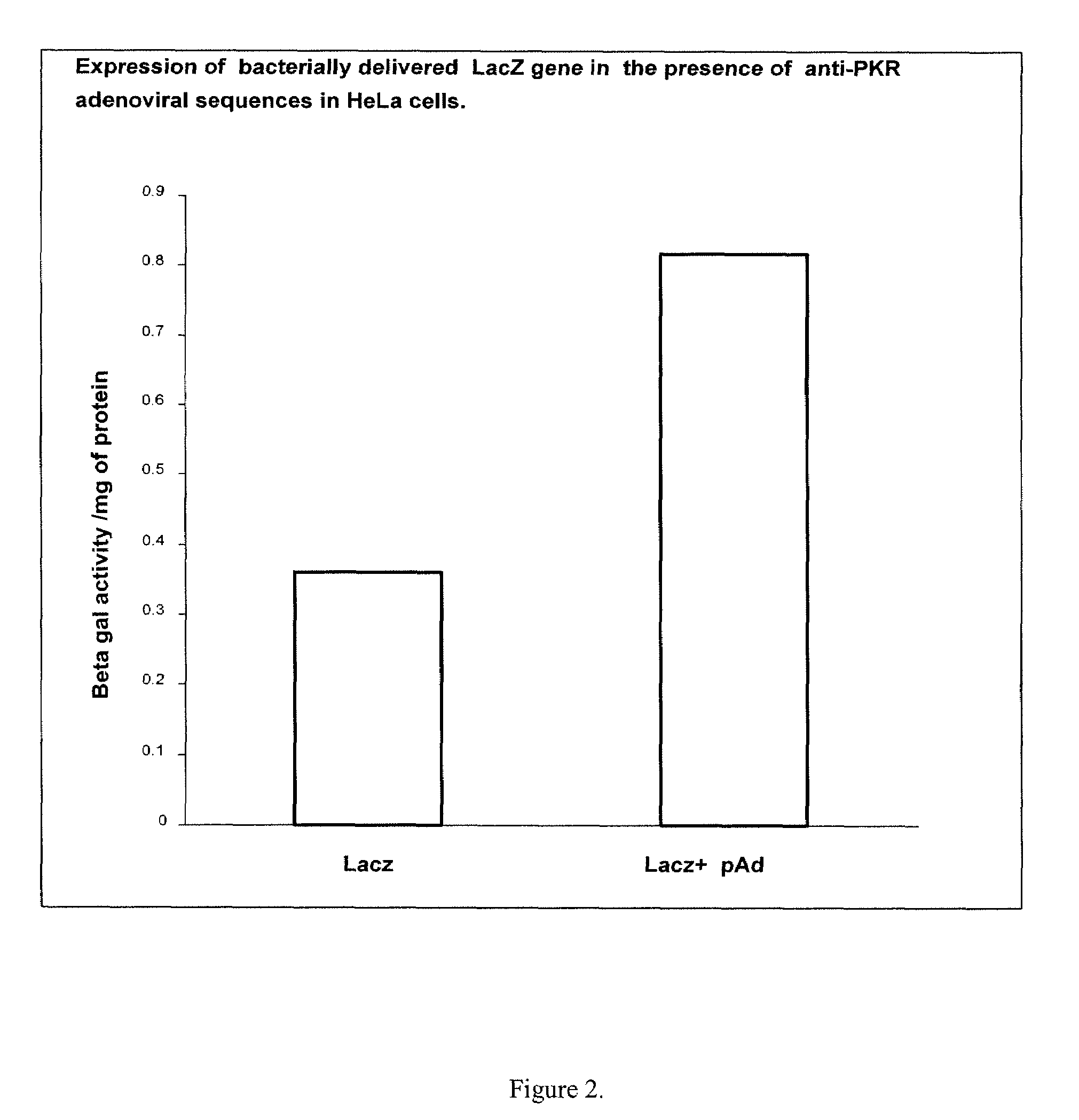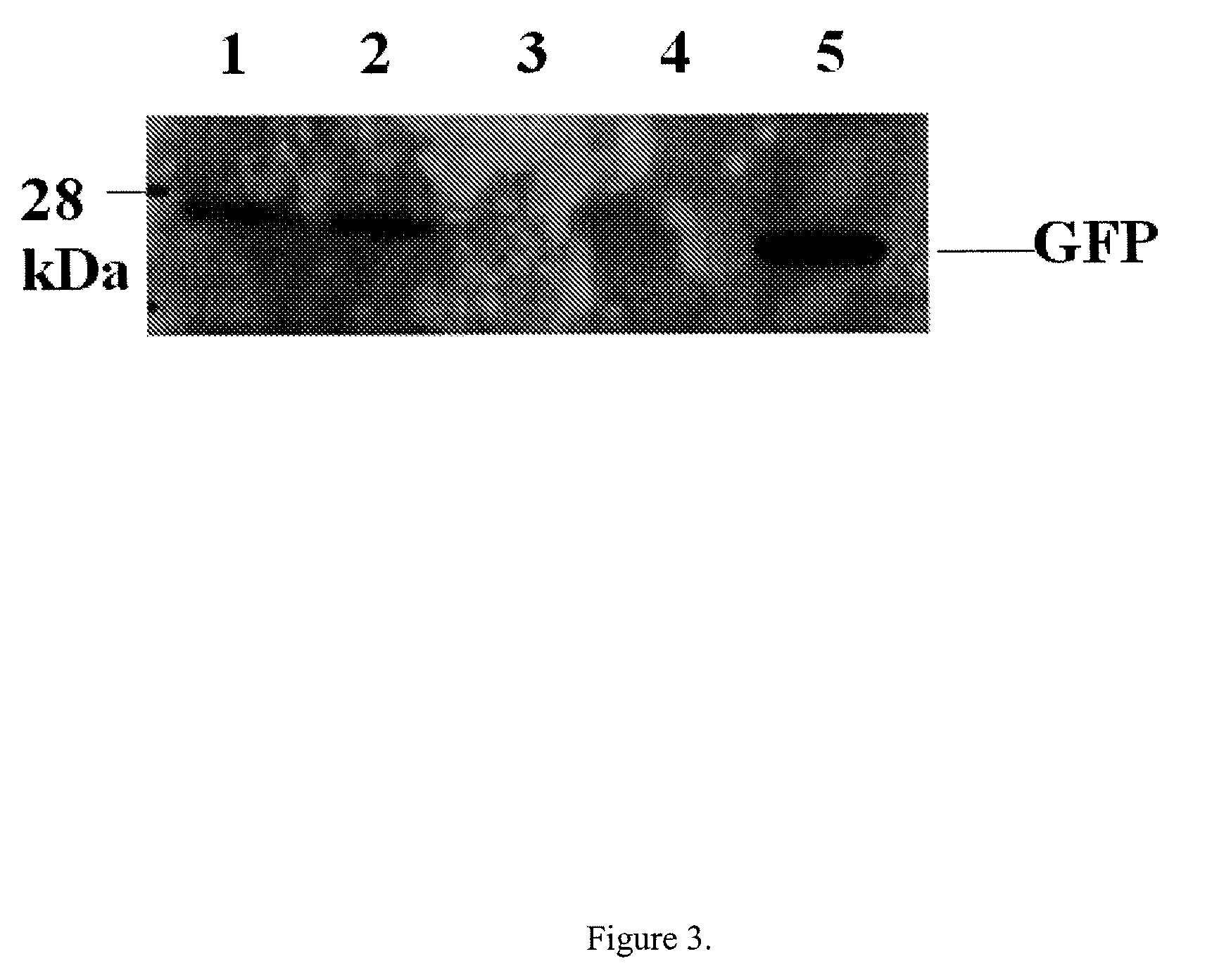Methods to increase transgene expression from bacterial-based delivery systems by co-expressing suppressors of the eukaryotic type I interferon response
a technology of eukaryotic type i and transgene, which is applied in the field of bacterial delivery systems, can solve the problems of limiting the expression of foreign nucleic acids, reducing rna production and stability, and the type i interferon response, and achieves enhanced expression and robust expression
- Summary
- Abstract
- Description
- Claims
- Application Information
AI Technical Summary
Benefits of technology
Problems solved by technology
Method used
Image
Examples
example 1
Induction of Type I Interferon Response in Host Cells by a Recombinant Shigella Vector
[0066]The ability of bacteria to induce a type 1 interferon response in mammalian cells was tested and the nature of the response was analyzed. Experimental conditions were as follows: Semi-confluent monolayers of HeLa cells were exposed to Shigella flexneri carrying a RNA passenger molecule for 1 hour at a multiplicity of infection (MOI) of 100 in a 6 well plate at 37° C. Cells were washed twice with Dulbecco's Modified Eagles's Medium (DMEM). Medium containing 150 μg / ml gentamicin was added to the cells for 1 hour to kill extracellular bacteria. Subsequently, cells were washed twice, and DMEM with 10% fetal bovine serum (FBS) was added and the infected cells were allowed to incubate for 20 h. Cells were then washed twice with phosphate buffered saline (PBS) and total RNA was isolated using an RNeasy mini kit (Qiagen). The Human Interferons and Receptors RT2Profiler™ PCR Array (Superarray Bioscien...
example 2
Construction of Bacterial Delivery Systems that Counter the Negative Effects of the Type I IFN Response on Expression of Passenger Nucleic Acids Delivered by Bacterial Vectors
[0071]This example describes the construction and use of two bacterial delivery systems that reduced the negative effects of IFNs on expression of a passenger nucleic acids. In both cases, nucleic acids were genetically engineered into attenuated, invasive Shigella flexneri strains by electroporation. Shigella flexneri was selected because it is naturally invasive in many tissue culture cell lines and animal models. The Shigella strain carries introduced chromosomal mutations that cause it to lyse after invasion of eukaryotic cells and escape from the endocytic vesicle, enabling the release of passenger molecules into the eukaryotic cell cytoplasm.
[0072]In the first set of experiments, electro-competent Shigella flexneri strain NCD1 was prepared and electroporated with the commercially available E. coli beta-ga...
example 3
Construction of an Expression Vector Expressing an Interferon Resistance Gene in Both Bacteria and Mammalian Cells and a Protein of Interest Only in Mammalian Cells
[0076]A plasmid vector is constructed to express the immunodominant Gag peptide of HIV-1. A 600 bp fragment is PCR-amplified from a synthetic gag gene. The sequence is amplified using Accuprime DNA polymerase (Invitrogen, Carlsbad, Calif.) and primers including HpaI and NotI RE sites. The size of the amplified sequence is verified by agarose gel electrophoresis, and is purified using a QIAquick PCR purification kit by following manufacturer's instructions (Qiagen, Cat. No. 28106, Valencia, Calif.). The 600 bp gag gene is cloned into the EcoRV and NotI sites (New England Biolabs, Beverly, Mass.,) of the expression vector plasmid pcDNA3.1zeo(+) (Invitrogen, Carlsbad, Calif.). Recombinant plasmids harboring the appropriate inserts are identified and the novel plasmid is designated pGAG4X.
[0077]An interferon resistance gene (...
PUM
| Property | Measurement | Unit |
|---|---|---|
| pH | aaaaa | aaaaa |
| pH | aaaaa | aaaaa |
| concentrations | aaaaa | aaaaa |
Abstract
Description
Claims
Application Information
 Login to View More
Login to View More - R&D
- Intellectual Property
- Life Sciences
- Materials
- Tech Scout
- Unparalleled Data Quality
- Higher Quality Content
- 60% Fewer Hallucinations
Browse by: Latest US Patents, China's latest patents, Technical Efficacy Thesaurus, Application Domain, Technology Topic, Popular Technical Reports.
© 2025 PatSnap. All rights reserved.Legal|Privacy policy|Modern Slavery Act Transparency Statement|Sitemap|About US| Contact US: help@patsnap.com



